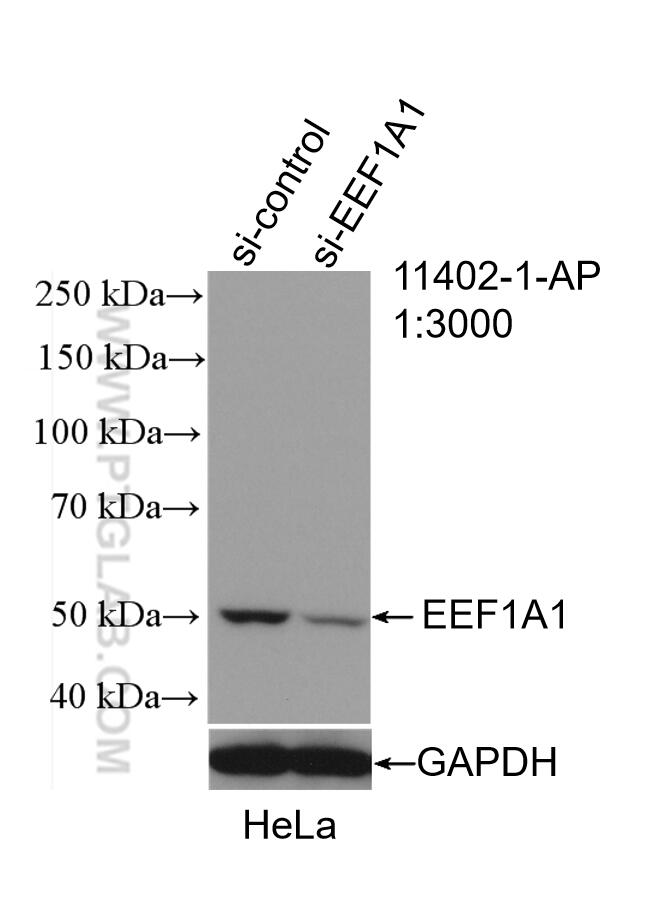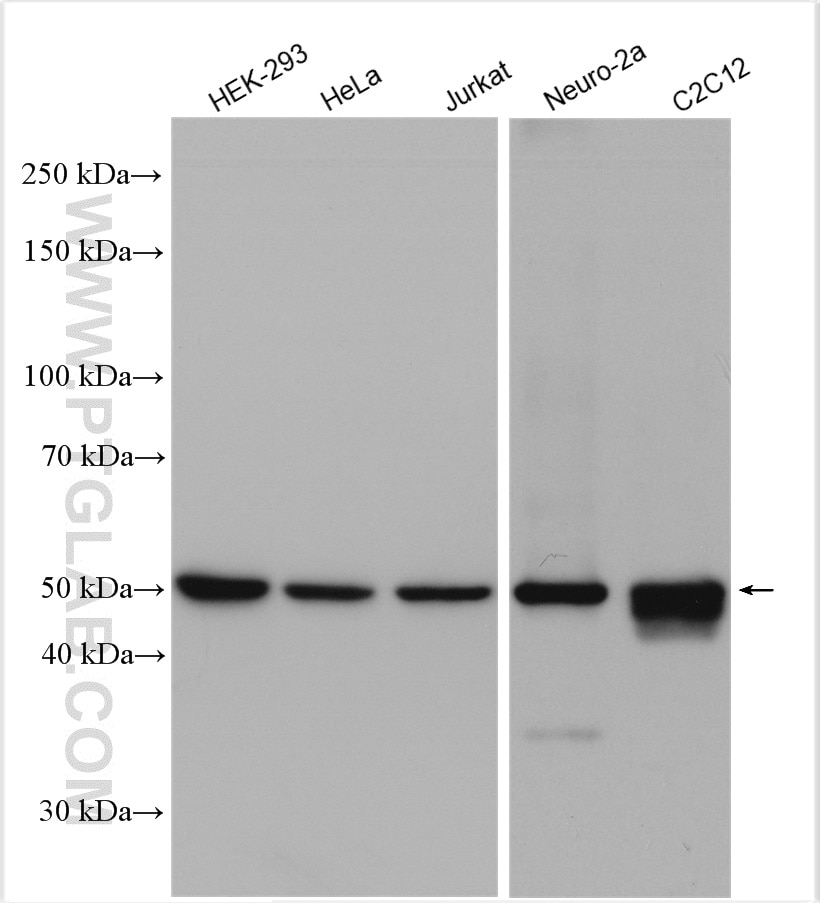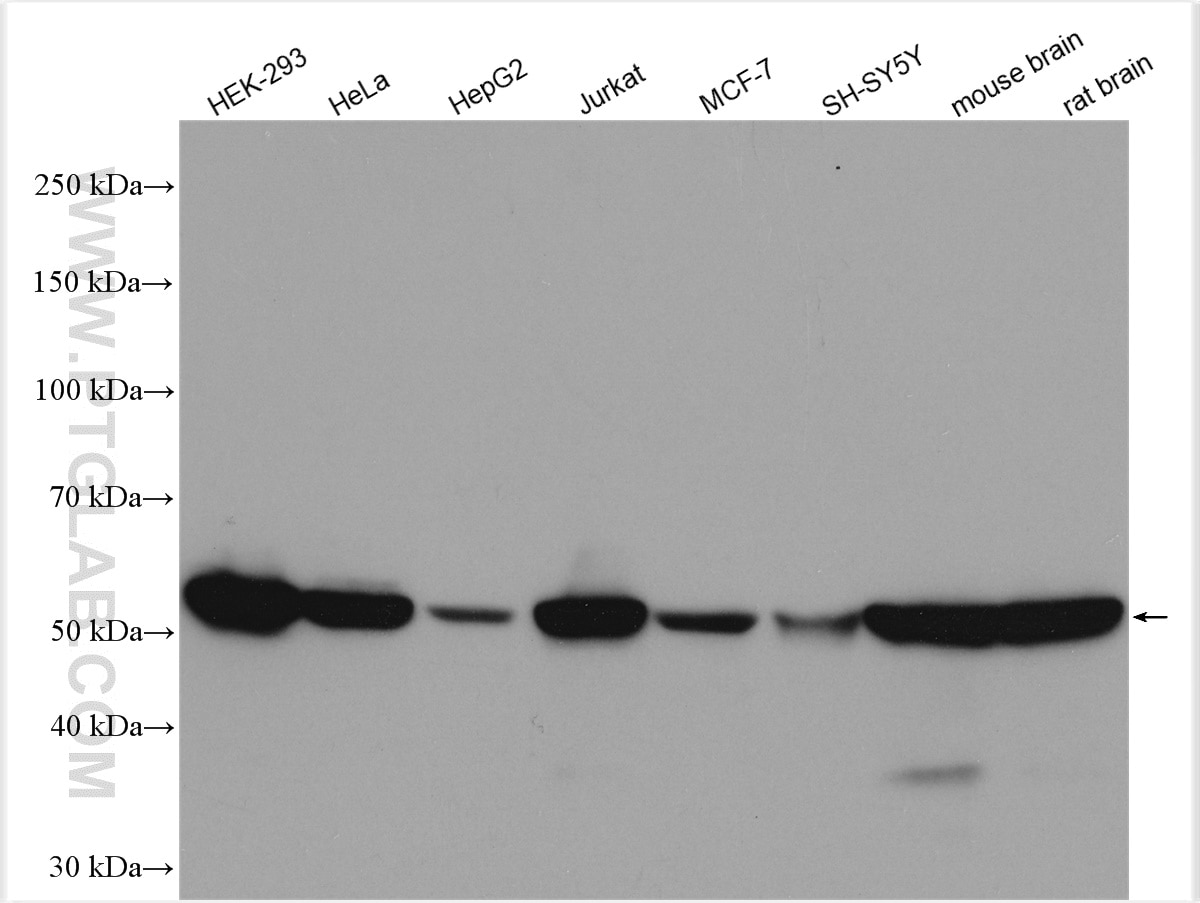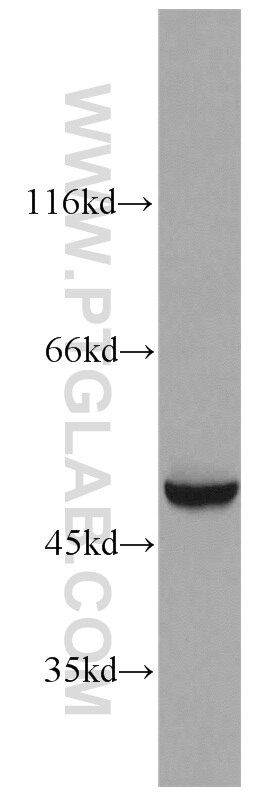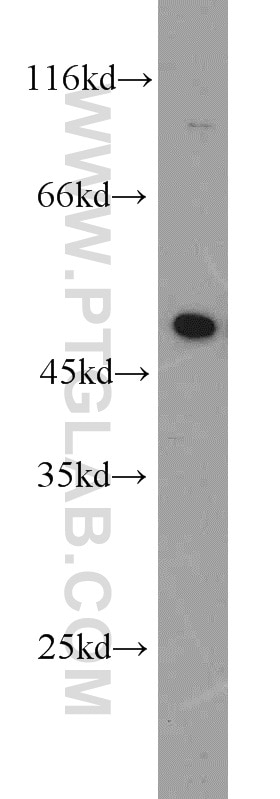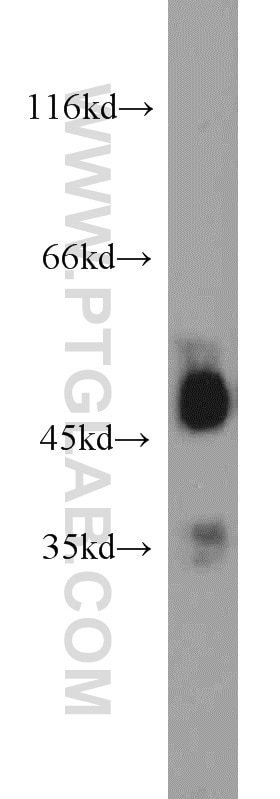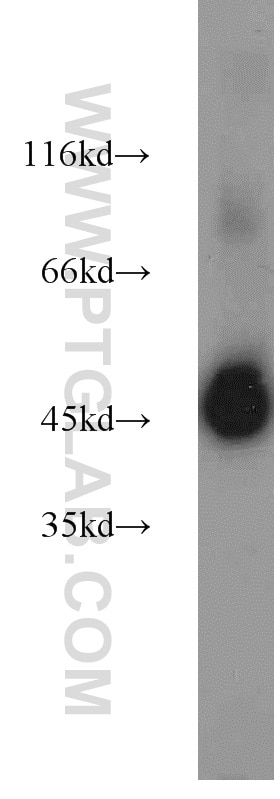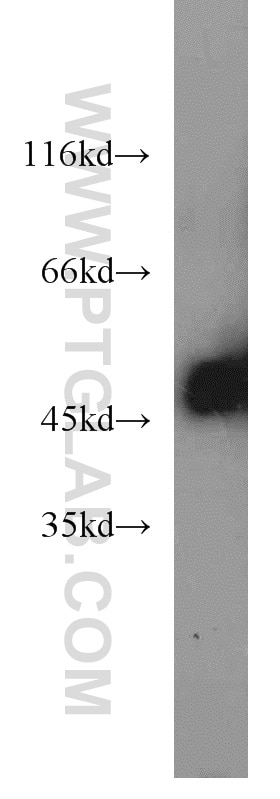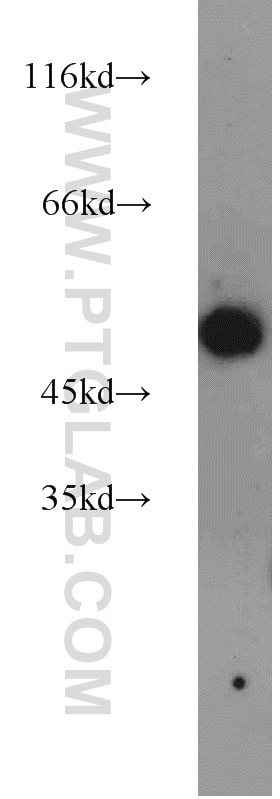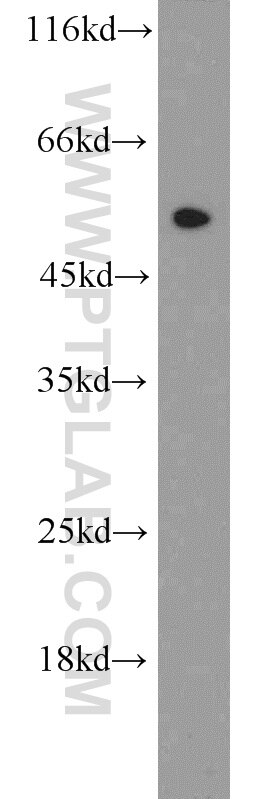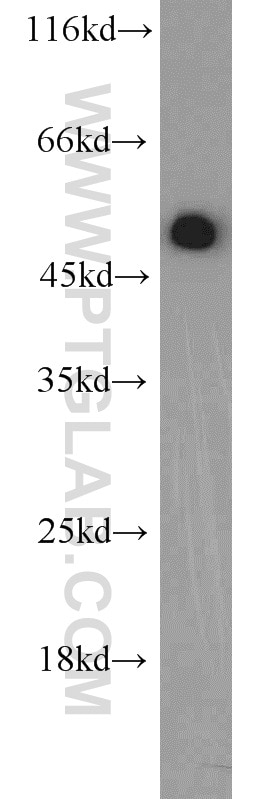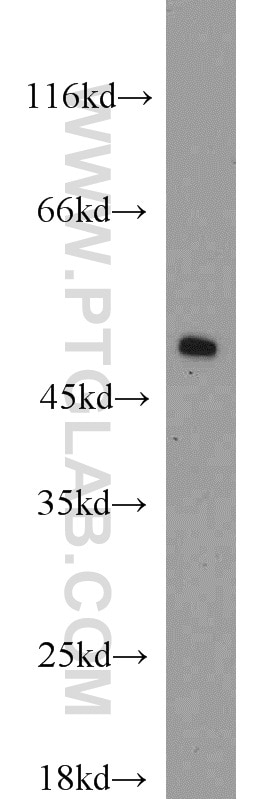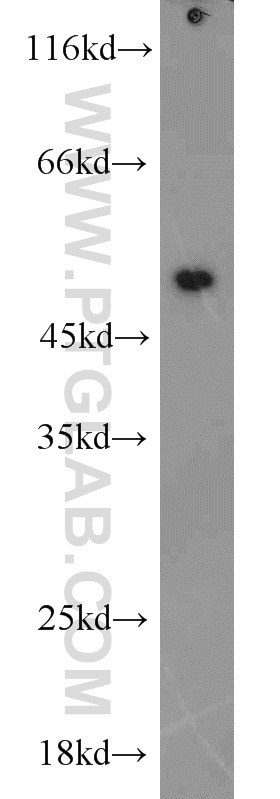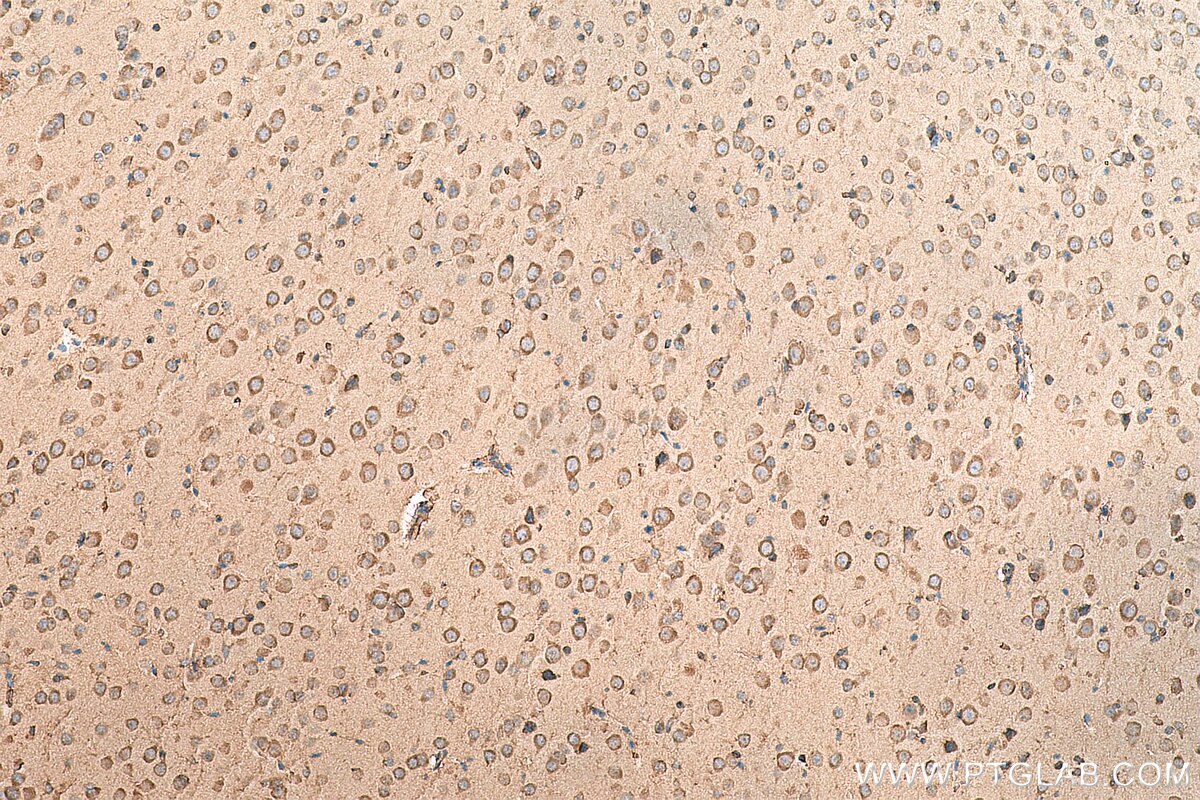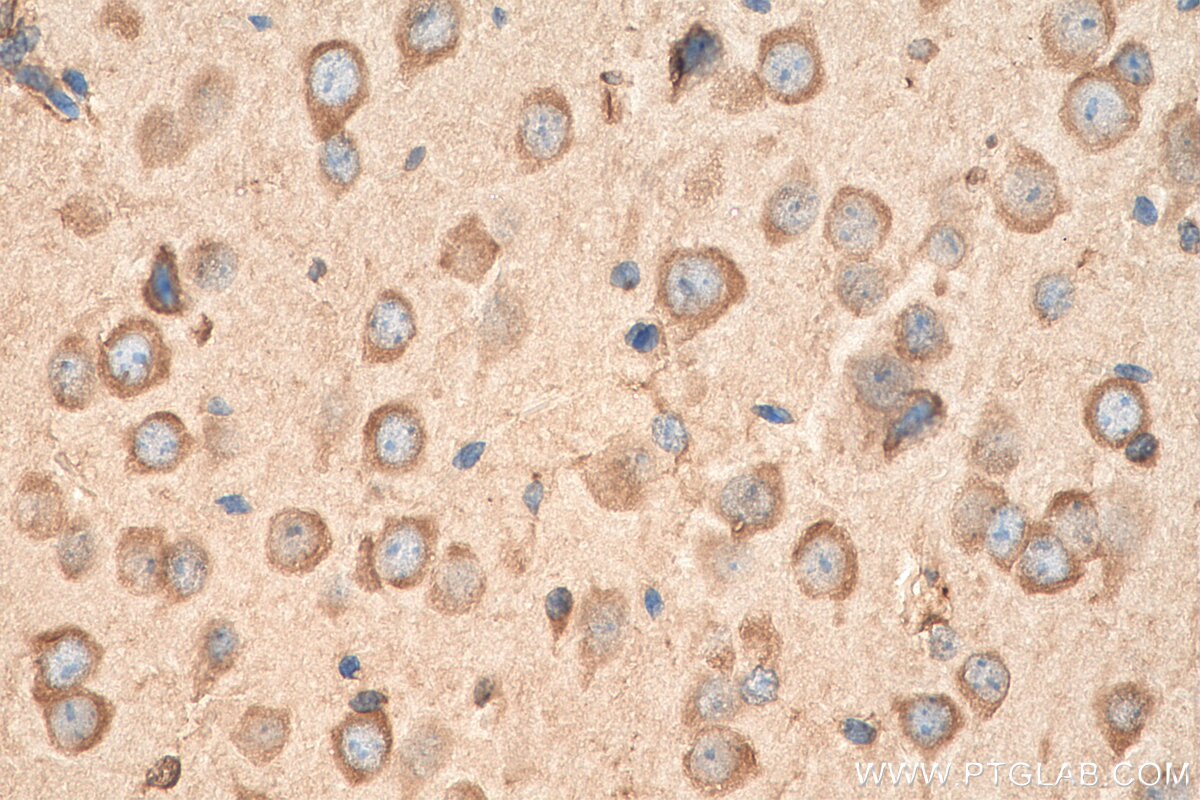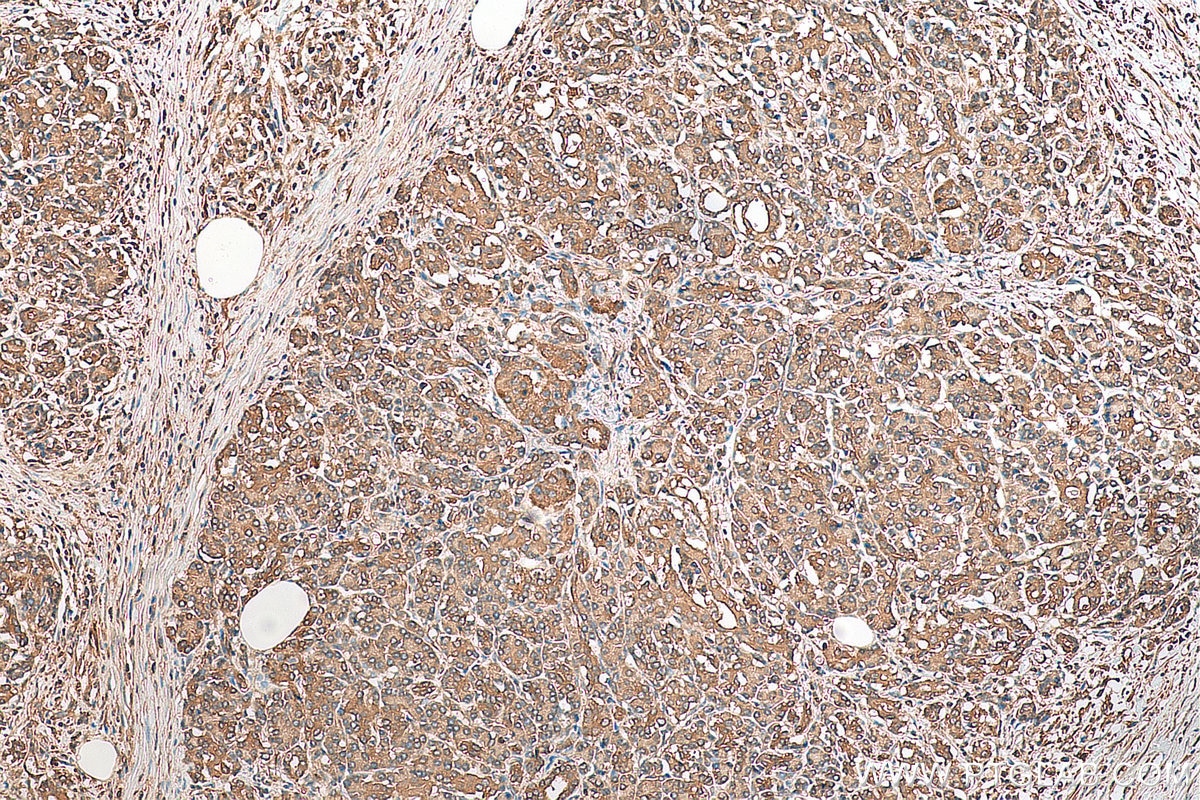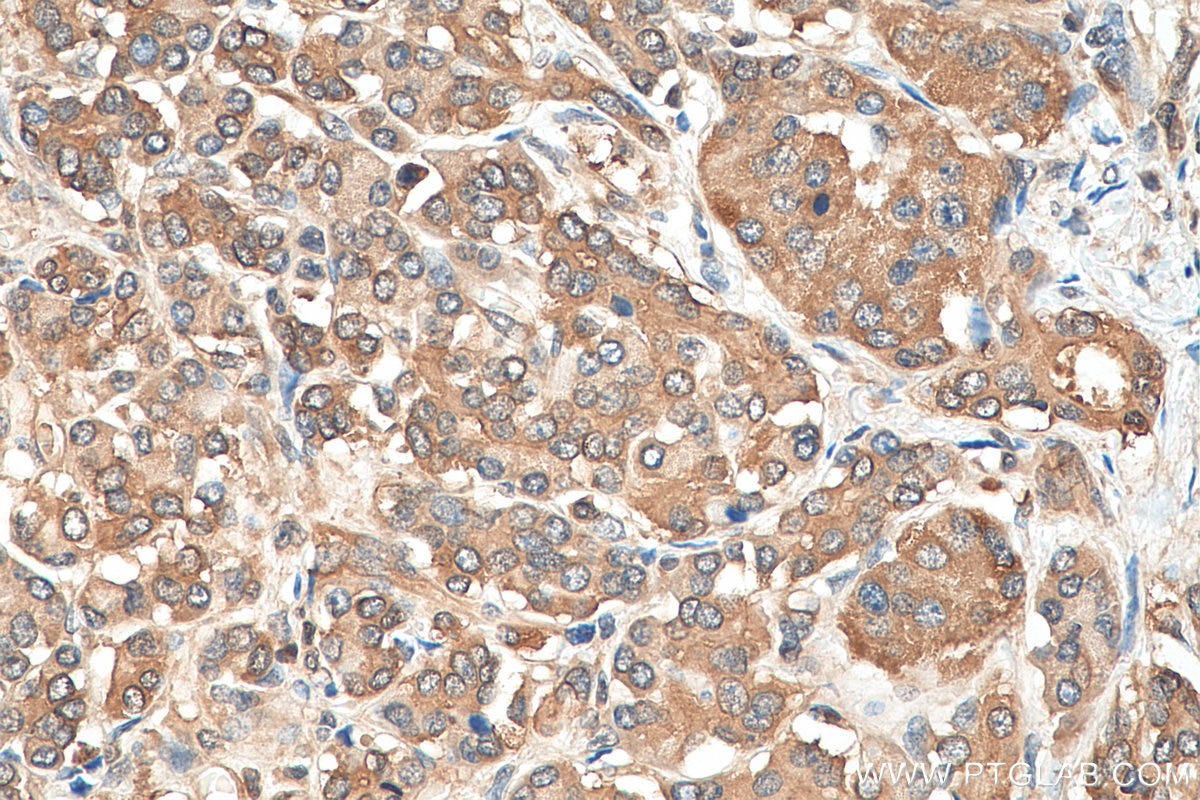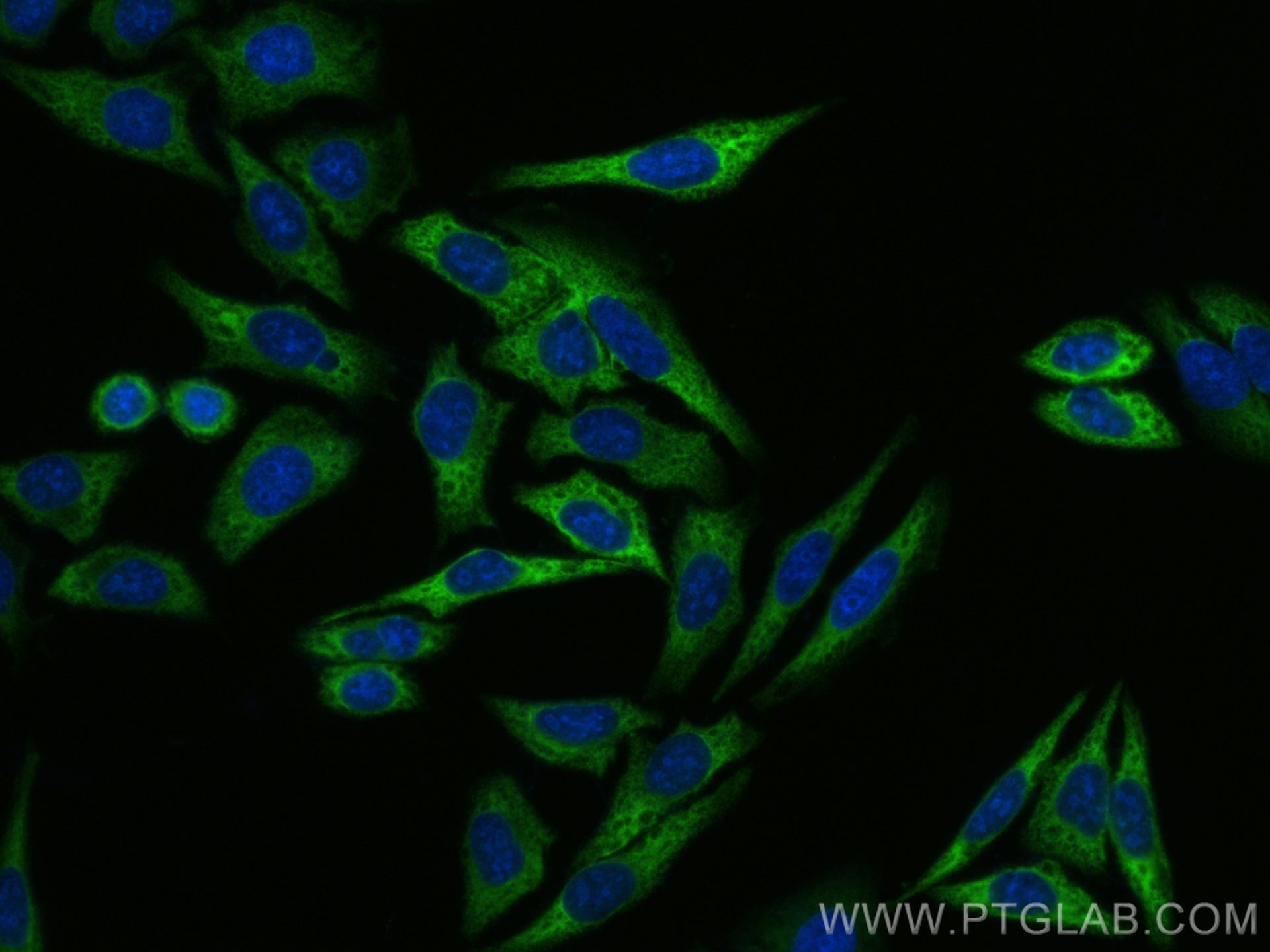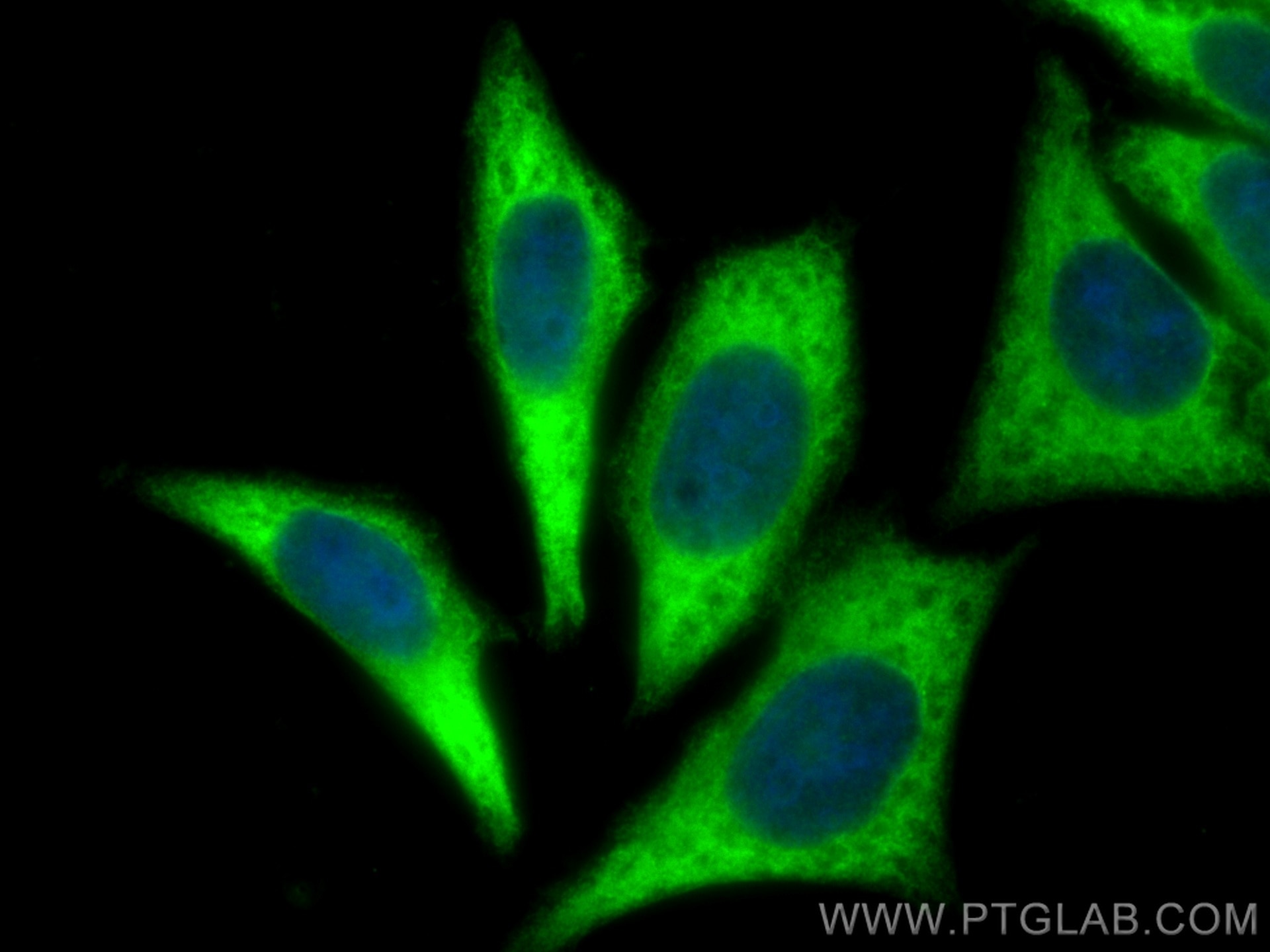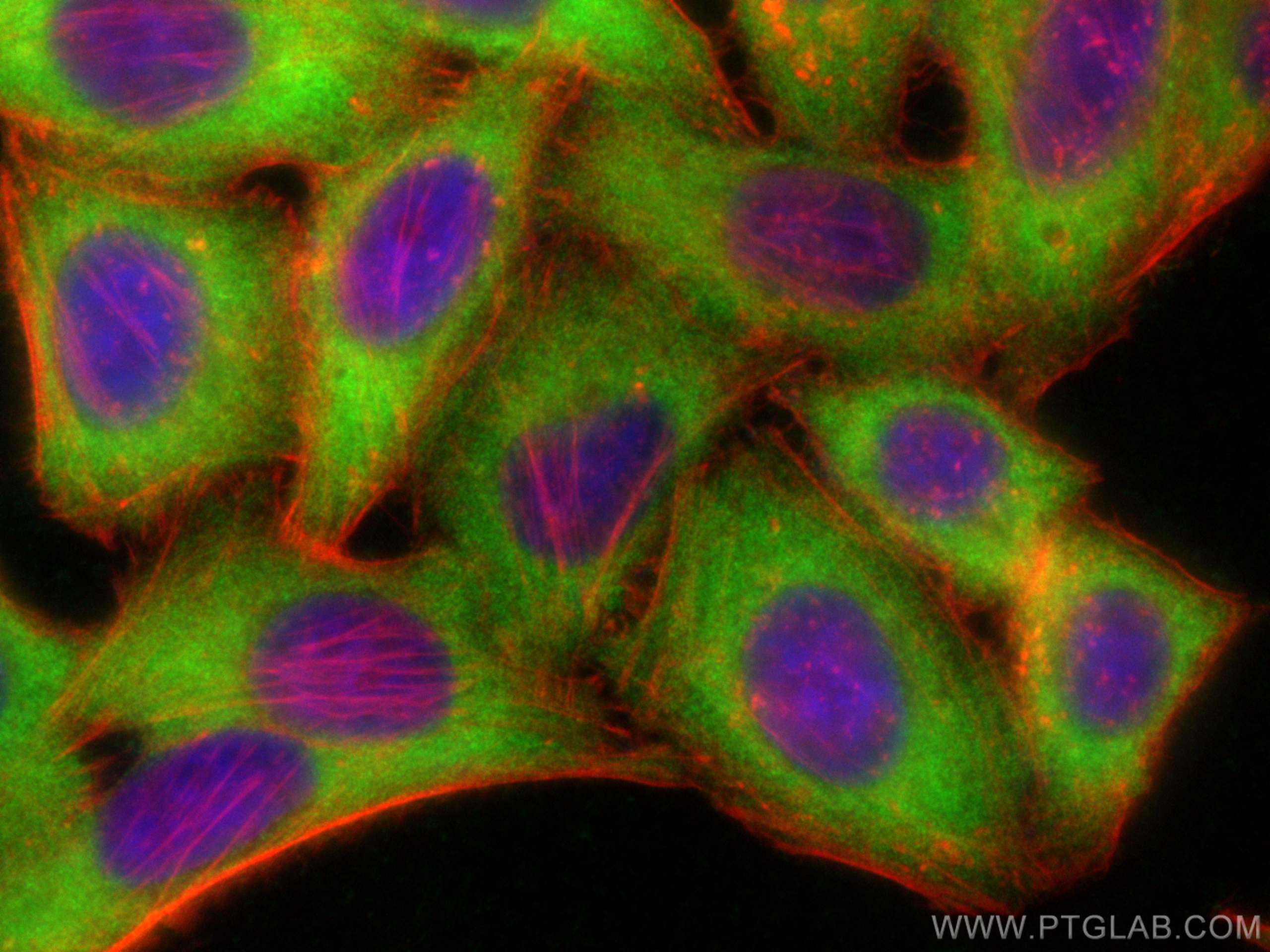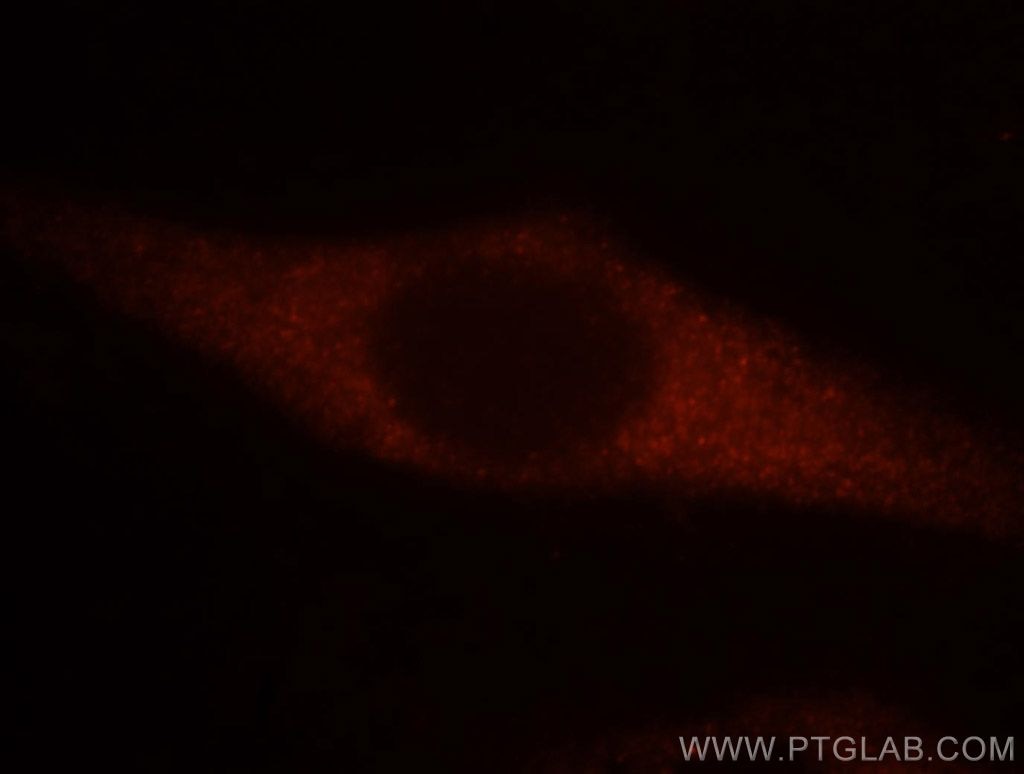- Phare
- Validé par KD/KO
Anticorps Polyclonal de lapin anti-EEF1A1
EEF1A1 Polyclonal Antibody for WB, IHC, IF/ICC, ELISA
Hôte / Isotype
Lapin / IgG
Réactivité testée
Humain, rat, souris et plus (1)
Applications
WB, IHC, IF/ICC, IP, CoIP, RIP, ELISA
Conjugaison
Non conjugué
N° de cat : 11402-1-AP
Synonymes
Galerie de données de validation
Applications testées
| Résultats positifs en WB | cellules HEK-293, cellules C2C12, cellules HeLa, cellules HepG2, cellules Jurkat, cellules MCF-7, cellules Neuro-2a, cellules SH-SY5Y, tissu cardiaque de souris, tissu cérébral de rat, tissu cérébral de souris, tissu cérébral humain, tissu de muscle squelettique de souris, tissu hépatique de souris, tissu ovarien de souris, tissu pancréatique de souris |
| Résultats positifs en IHC | tissu cérébral de souris, tissu de cancer du pancréas humain il est suggéré de démasquer l'antigène avec un tampon de TE buffer pH 9.0; (*) À défaut, 'le démasquage de l'antigène peut être 'effectué avec un tampon citrate pH 6,0. |
| Résultats positifs en IF/ICC | cellules HepG2, cellules HeLa |
Dilution recommandée
| Application | Dilution |
|---|---|
| Western Blot (WB) | WB : 1:2000-1:12000 |
| Immunohistochimie (IHC) | IHC : 1:50-1:500 |
| Immunofluorescence (IF)/ICC | IF/ICC : 1:200-1:800 |
| It is recommended that this reagent should be titrated in each testing system to obtain optimal results. | |
| Sample-dependent, check data in validation data gallery | |
Informations sur le produit
11402-1-AP cible EEF1A1 dans les applications de WB, IHC, IF/ICC, IP, CoIP, RIP, ELISA et montre une réactivité avec des échantillons Humain, rat, souris
| Réactivité | Humain, rat, souris |
| Réactivité citée | Humain, poisson-zèbre, souris |
| Hôte / Isotype | Lapin / IgG |
| Clonalité | Polyclonal |
| Type | Anticorps |
| Immunogène | EEF1A1 Protéine recombinante Ag1938 |
| Nom complet | eukaryotic translation elongation factor 1 alpha 1 |
| Masse moléculaire calculée | 462 aa, 50 kDa |
| Poids moléculaire observé | 50 kDa |
| Numéro d’acquisition GenBank | BC014224 |
| Symbole du gène | EEF1A1 |
| Identification du gène (NCBI) | 1915 |
| Conjugaison | Non conjugué |
| Forme | Liquide |
| Méthode de purification | Purification par affinité contre l'antigène |
| Tampon de stockage | PBS with 0.02% sodium azide and 50% glycerol |
| Conditions de stockage | Stocker à -20°C. Stable pendant un an après l'expédition. L'aliquotage n'est pas nécessaire pour le stockage à -20oC Les 20ul contiennent 0,1% de BSA. |
Informations générales
EEF1A1, also named as EEF1A, EF1A and LENG7, belongs to the GTP-binding elongation factor family. This protein promotes the GTP-dependent binding of aminoacyl-tRNA to the A-site of ribosomes during protein biosynthesis. It is a typical housekeeping gene product required for the maintenance of cell growth and/or survival. In addition, EEF1A1 protects the aminoester bond against hydrolysis until a correct match between the codon on mRNA and the anti-codon on tRNA can be achieved. This antibody is a rabbit polyclonal antibody raised against residues near the C terminus of human EEF1A1.
Protocole
| Product Specific Protocols | |
|---|---|
| WB protocol for EEF1A1 antibody 11402-1-AP | Download protocol |
| IHC protocol for EEF1A1 antibody 11402-1-AP | Download protocol |
| IF protocol for EEF1A1 antibody 11402-1-AP | Download protocol |
| Standard Protocols | |
|---|---|
| Click here to view our Standard Protocols |
Publications
| Species | Application | Title |
|---|---|---|
Cell Metab High dietary fructose promotes hepatocellular carcinoma progression by enhancing O-GlcNAcylation via microbiota-derived acetate | ||
Nat Commun Immunoproteasome-specific subunit PSMB9 induction is required to regulate cellular proteostasis upon mitochondrial dysfunction
| ||
Nat Chem Biol Gelation of cytoplasmic expanded CAG RNA repeats suppresses global protein synthesis | ||
Sci Adv CGG repeat RNA G-quadruplexes interact with FMRpolyG to cause neuronal dysfunction in fragile X-related tremor/ataxia syndrome. | ||
Dev Cell DDX20 is required for cell-cycle reentry of prospermatogonia and establishment of spermatogonial stem cell pool during testicular development in mice |
Avis
The reviews below have been submitted by verified Proteintech customers who received an incentive for providing their feedback.
FH Tom (Verified Customer) (08-25-2020) | This antibody successfully detects EEF1A1 in western blots. There was one specific and strong band at 50 kDa.
|
